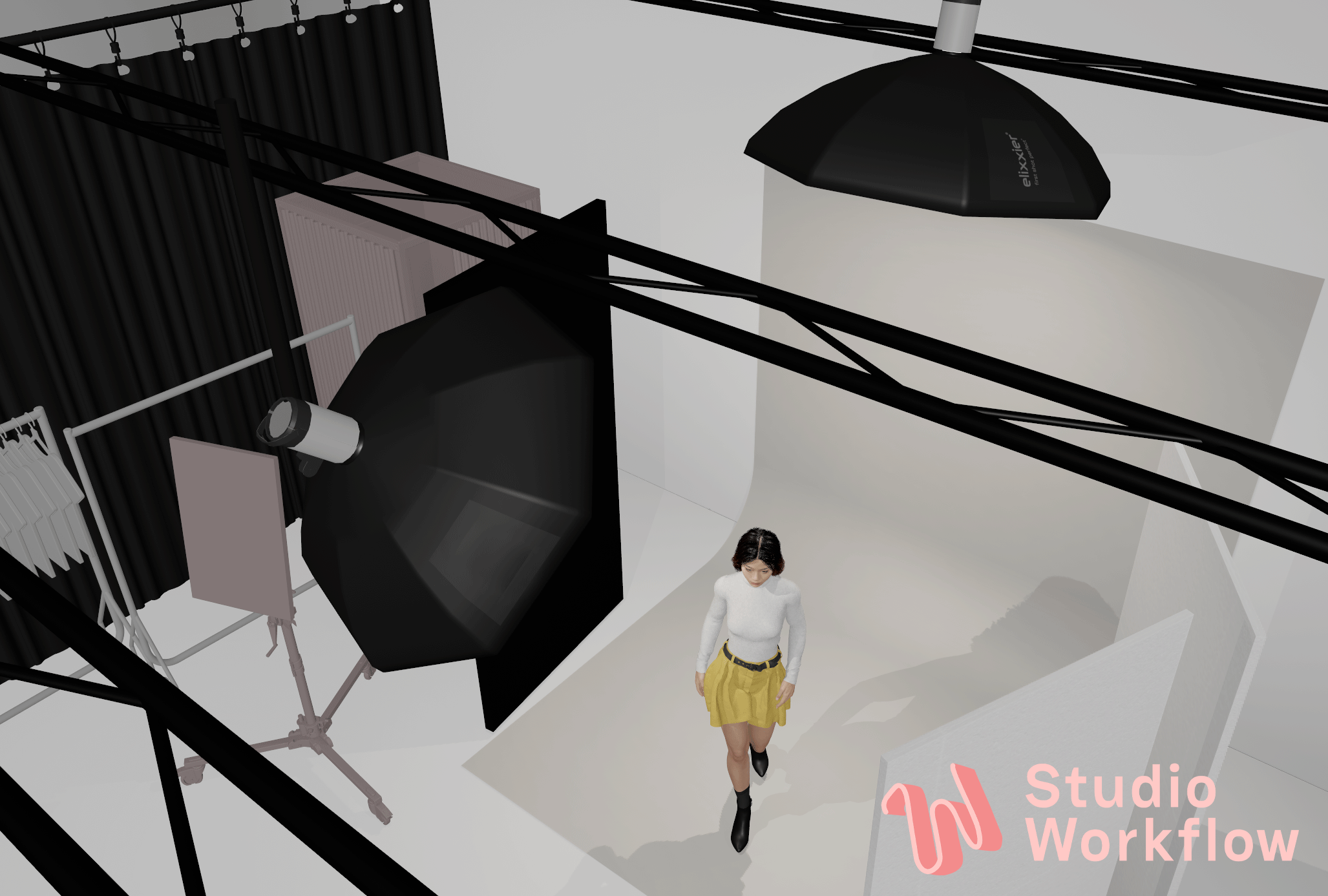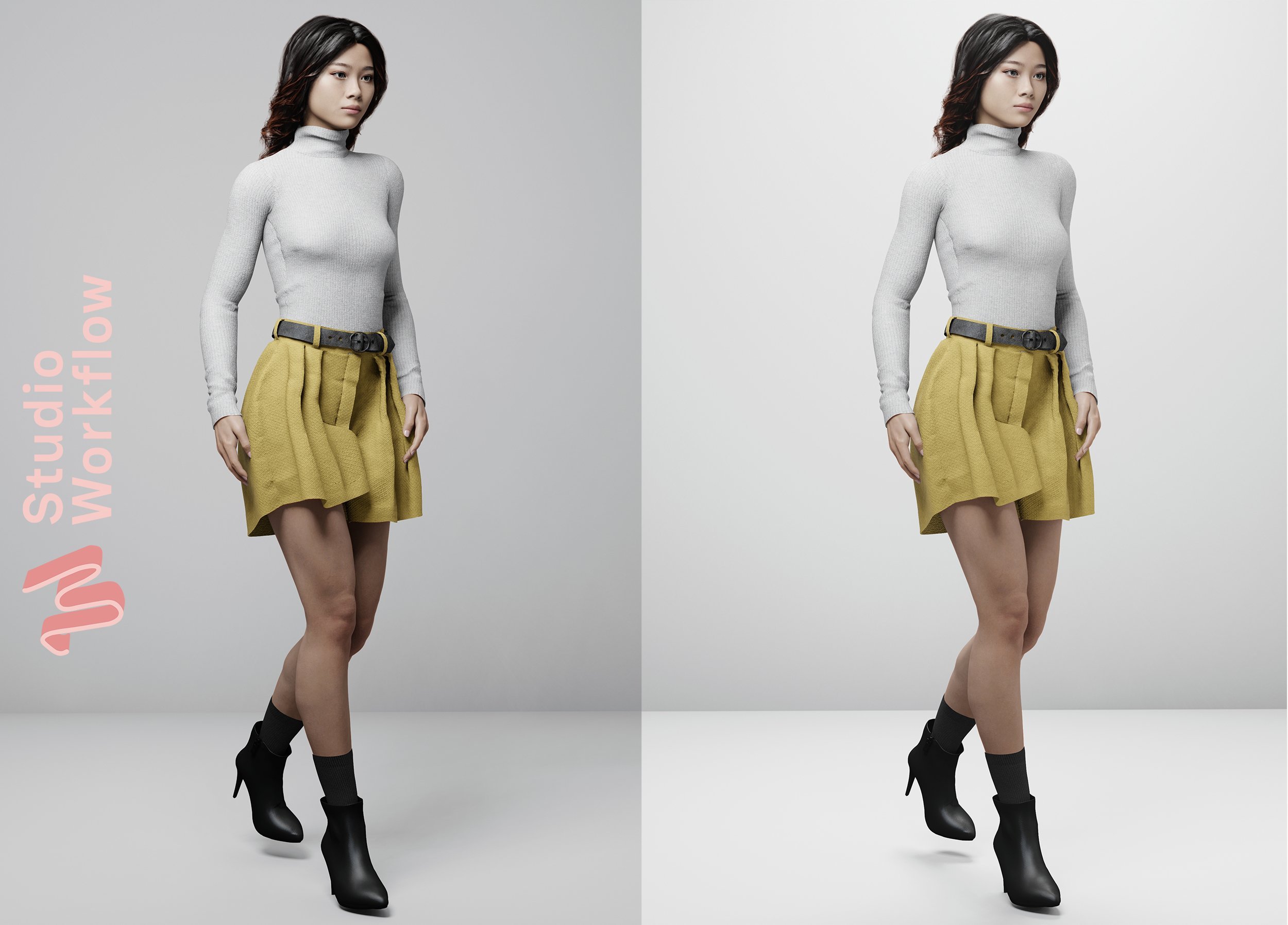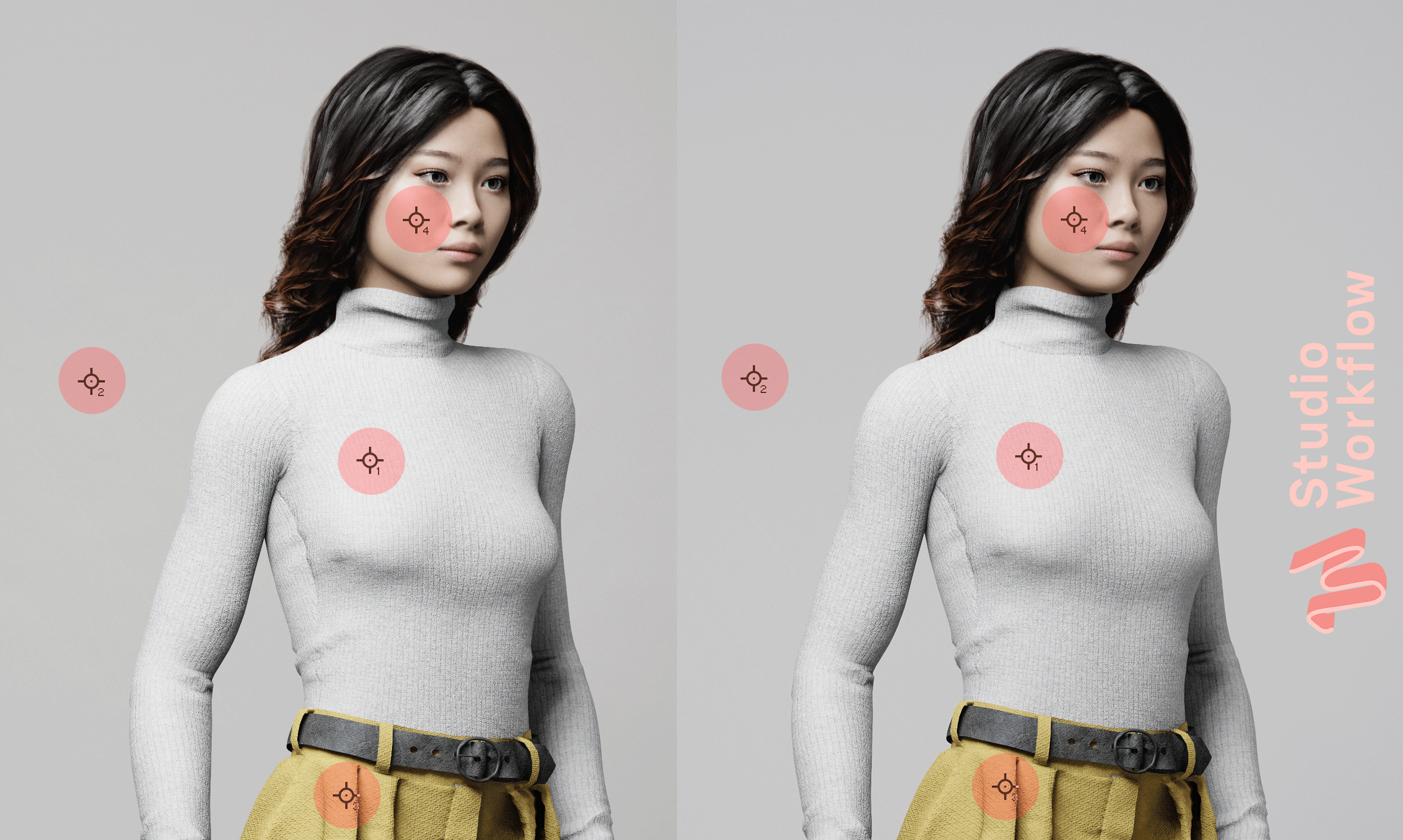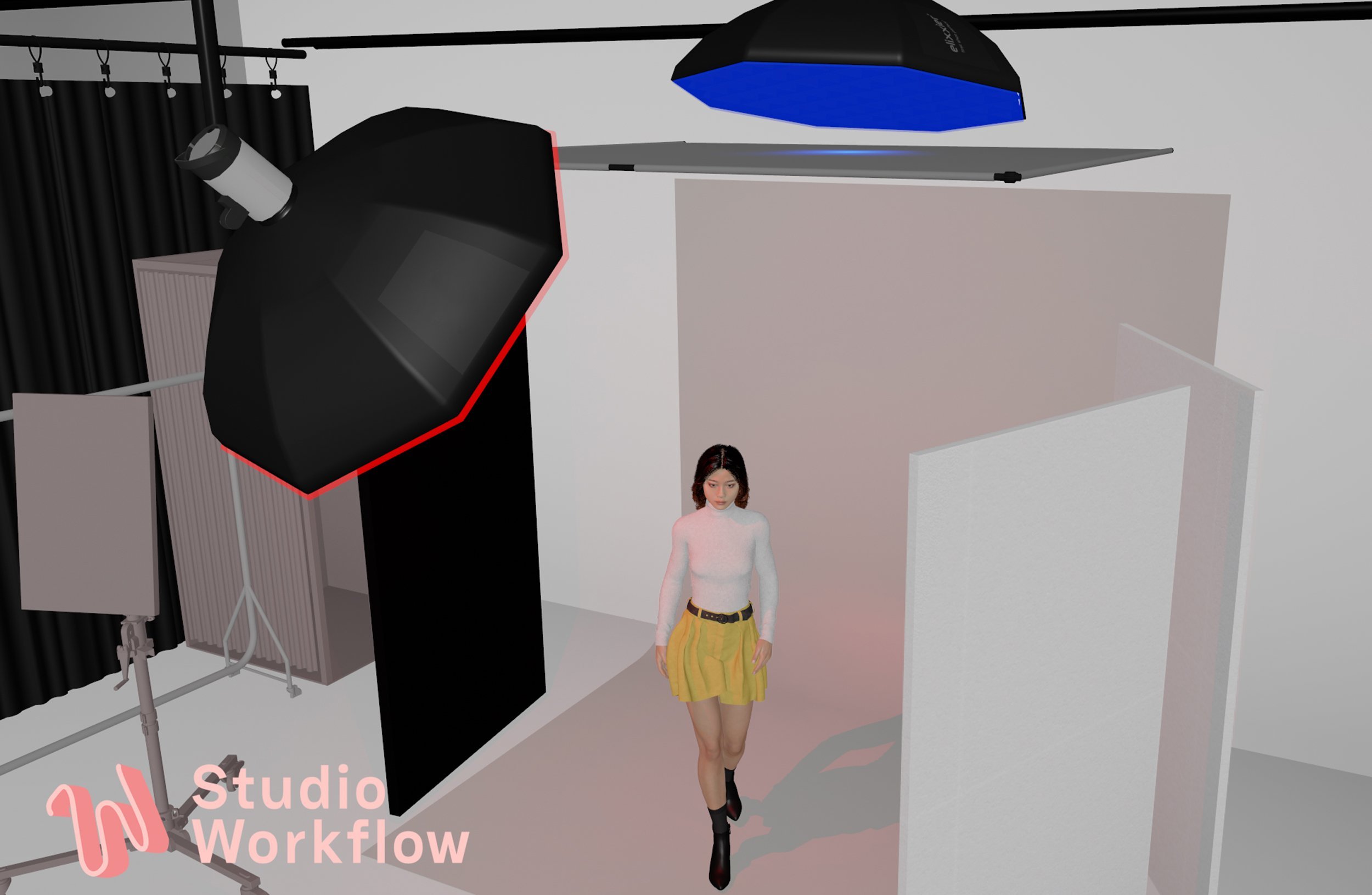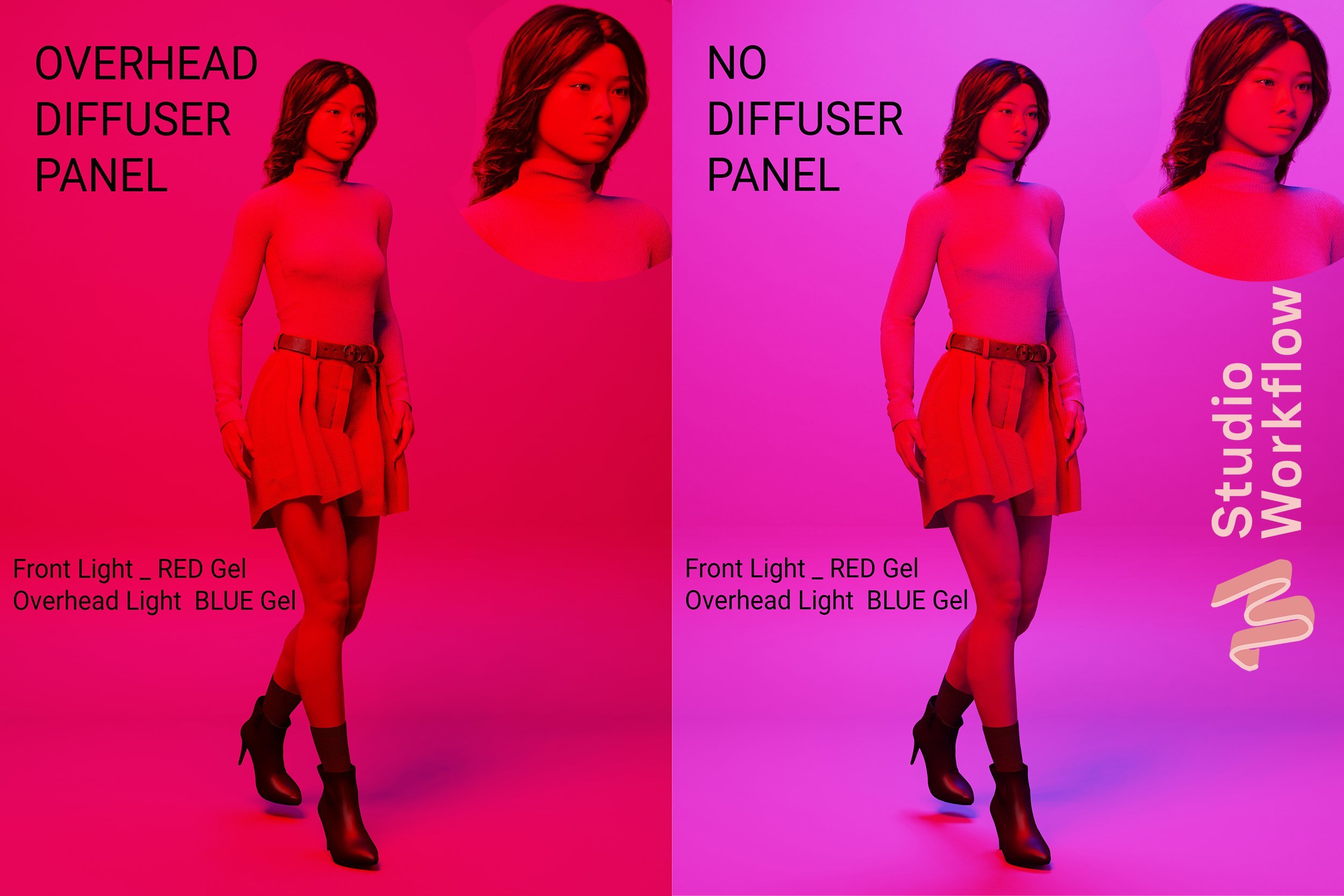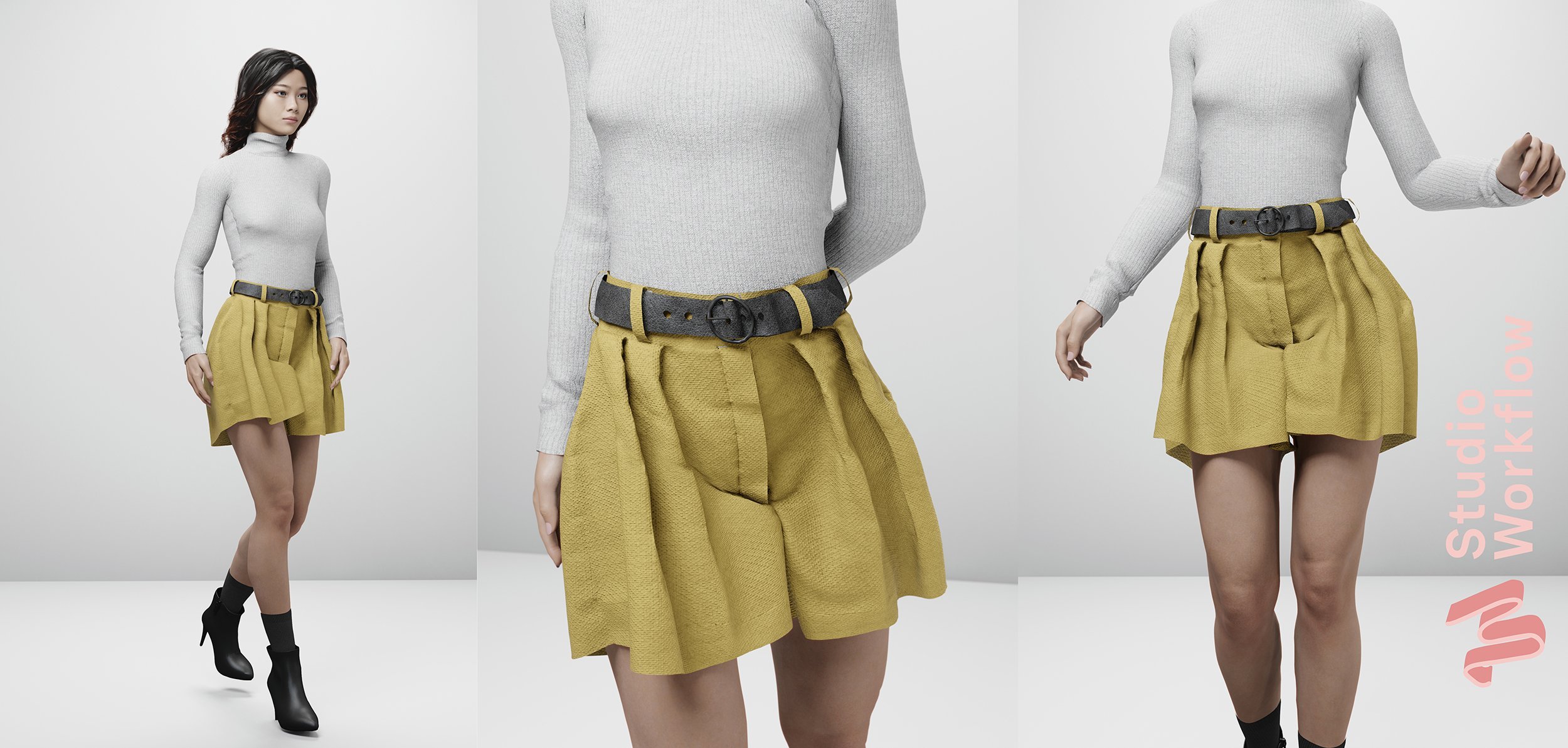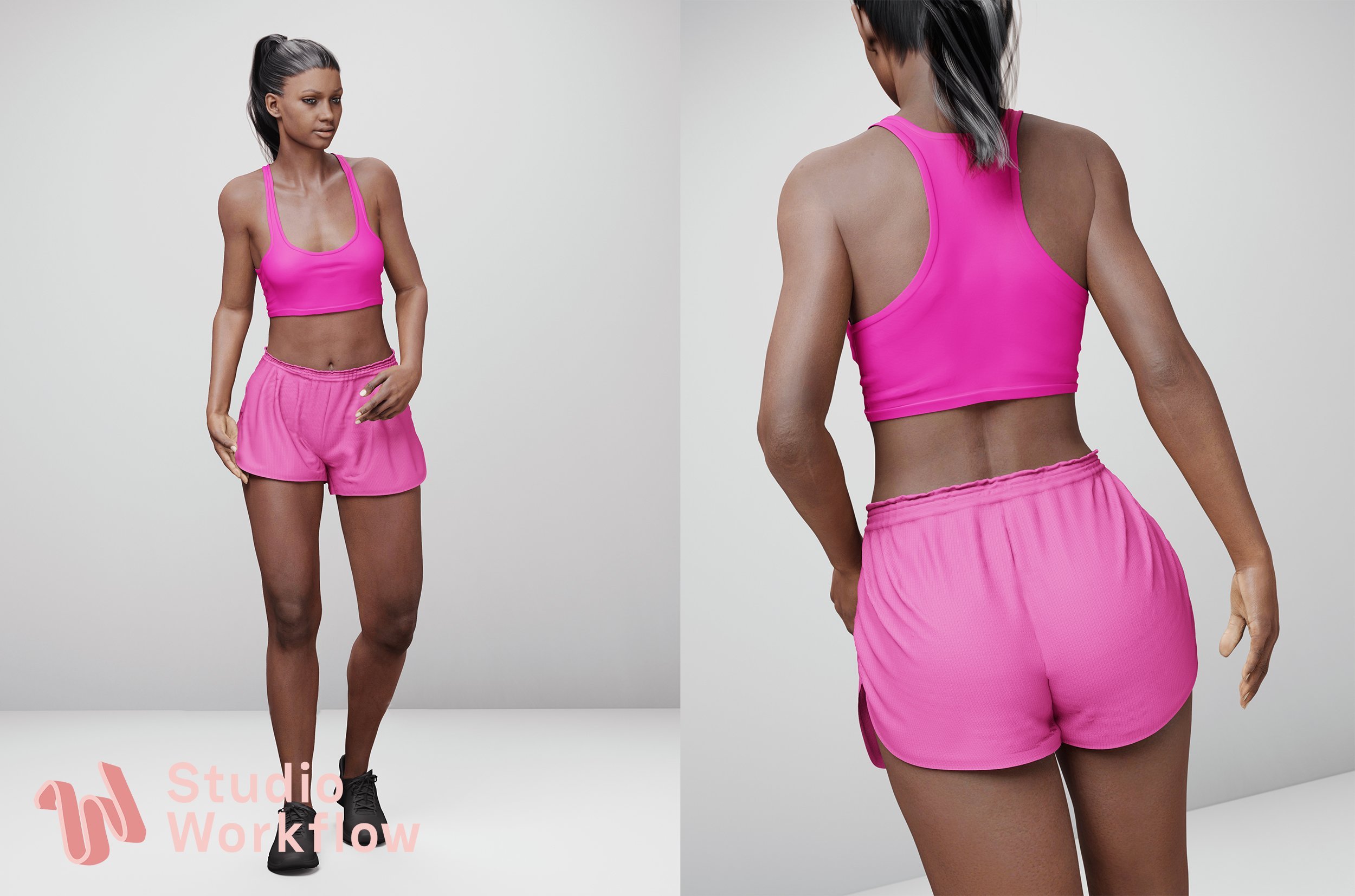Virtual Lighting Simulations for ecommerce: Deep Dive into On-Model Lighting Solutions
1. INTRODUCTION:
Continuing from our previous discussion on virtual lighting simulations for on-model ecommerce studio photography, we're examining adjustments within our Virtual Test studio. If this is your first encounter with the topic, start with our initial post here for context on our virtual ‘test studio’ construction.
2. CLIENT FEEDBACK & ADJUSTED APPROACH:
After our last simulation, we received feedback from the (hypothetical) client that guided our next areas of exploration : the preferred set up was to remove the Chardonnay Colorama from testing and focus on two sets.
White Colorama
White Wall Studio
Additionally, the client expressed interest in test shots both with and without the overhead diffuser panel. This is a common type of feedback and could stem from creative preferences like a desire for a brighter background or logistical considerations like budget restrictions, rigging simplicity, improved HVAC airflow, or essential facility access.
3. ADVANTAGES OF VIRTUAL SIMULATIONS:
Altering elements, such as diffuser panels, in a virtual environment enables quick and precise evaluation for the client. So we remove the panel and make another run of lighting tests. Note from the GIF below, we have kept all other conditions the same to ensure a clear comparison of results.
REMOVING OVERHEAD DIFFUSION PANEL FROM SIMULATION MODEL
COLORAMA SET : IMAGE ON LEFT WITH OVERHEAD DIFFUSION PANEL, REMOVED ON IMAGE RIGHT
STUDIO WALL SET : IMAGE ON LEFT WITH OVERHEAD DIFFUSION PANEL, REMOVED ON IMAGE RIGHT
4. EXPOSURE EVALUATION AND COMPARING RESULTS:
Upon removing the diffuser panel, there's an evident exposure difference between the two images. This means we should address any changes via Lighting, we do not want to change any Camera settings, or move variables on the set itself.
To address this, and allow a correction we utilised a Colour Value picker tool, common in platforms like Capture1 or Photoshop. By selecting four distinct reference points:
Face and skin tone
Two on the clothing
Background
We have highlighted the 4 points in a pink circle on the GIF below.
We found that maintaining the previously approved exposure required reducing the front Octa light by 1% and decreasing the overhead light by 6%. This means we get the value lift in the background which was preferred but experience no change of exposure or colour shift on the model or the clothing.
Consistency is key in ecommerce model photography sets.
CHECKING VITAL POINT SAMPLES TO ENSURE LIGHTING ACCURACY
5. LIGHTING COLOR VARIATIONS:
To enhance our understanding of light interaction on the simulation, we added a RED gel to the front Octa and a BLUE gel to the rear overhead light. Side-by-side comparisons show that without the overhead diffuser panel, the overhead light (BLUE) impacts the background more prominently, creating a shift in contrast. Also more light spills onto the Model hair and shoulders, so we need to be aware of this when checking exposures and also Model movement.
ADDING GELS TO CHECK LIGHT SPREAD
TESTING THE LIGHT SEPARATION
6. OBJECTIVITY IN VIRTUAL SIMULATIONS:
The virtual setup ensures controlled test images, eliminating potential personal biases from the evaluation process. This precision ensures outputs that match the desired specifications and makes the critical creative choices more easily. In a real world test simulation in the studio, decision makers may be drawn to an image for a number of reasons, for example the model pose changed in a subtle way, or the hair or facial expression convey something different. There is no risk of this in a virtual simulation model.
7. CLIENT'S SELECTED SETUP:
After the comprehensive testing, the client leaned towards:
No Diffuser Panel
Using White Studio Walls without the Colorama
So this would be our starting criteria to then test elements such as skin tone and understanding light fall off, ie what is the sweet spot for the model to be able to move and pose in. We can also test for any changes that may be required for hard to shoot items such as matte black, reflective or neons.
TESTING THE IMAGE SEQUENCE FOR ECOMMERCE
TESTING SKIN TONE FOR ECOMMERCE STUDIO LIGHTING
8. UPCOMING SIMULATION TESTS:
So we're not stopping here, we need to also look at a potential video set-up and using “Constant” Lighting a result can be replicated as a close match.
We should also look at camera settings for this current set if the strobes were replaced with an LED option as we know the client may be interested in the budget differences. LED lighting for ecommerce model sets can present significant savings in capital at purchase point, and present lower operating costs of electrical demand over time.
9. CONCLUSION:
Ecommerce studio photography on model is a blend of creativity and precision. With our series on virtual lighting simulations, we aim to offer a comprehensive view into studio lighting for ecommerce. If you're seeking to refine your studio's lighting or design please connect with us and let’s talk about how to craft your tailored studio solution.
Keep an eye out on the blog as we continue exploring this area, as we discuss technical clarity and expertise at each step. If you have questions on issues raised in this post, or if we missed any key technical elements you would like to see further information on then please let us know.
If you are ready to elevate your studio's lighting strategy, reach out and let's craft your bespoke lighting solution together.

